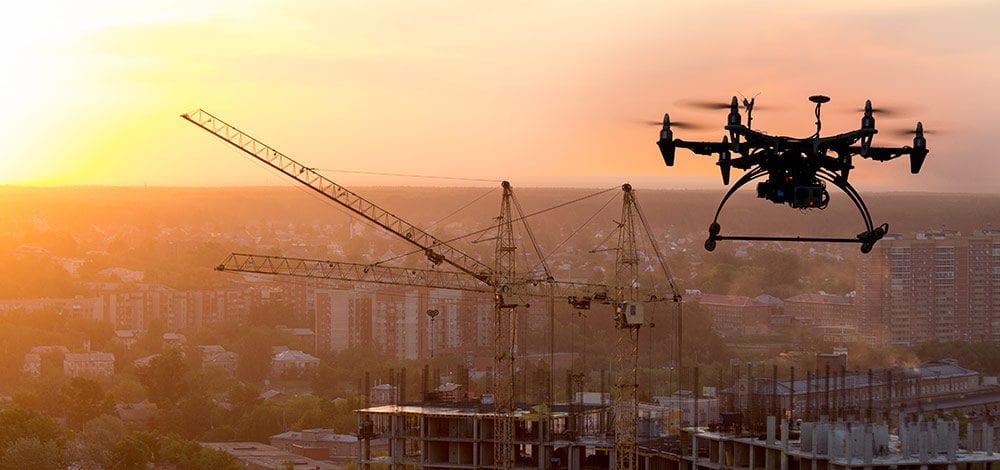Balfour Beatty believes that the rise of digitization and robotics in construction will bring about a huge increase in productivity.
However, thus far, construction and civil engineering have been slower on the uptake of digital innovation than most other industries. This may be changing thanks to Building Information Modeling (BIM).
BIM has the potential to drive technological innovations across the sector that feed off, or into, these digital models. Skanska, for example, is focusing on connecting its CAD systems to robotics, so robots understand what is required and have the autonomy to execute tasks without human input.
Government backing is helping
The government has thrown its weight behind BIM, not least by using its purchasing clout.
Digital Built Britain – the government-led program to create a digital economy for infrastructure, buildings and services – aims to transform how the construction industry operates by digitizing the entire life cycle of the UK’s built assets.
BIM is central because it provides the most detailed analytical view of a built asset during design and construction, and can also inform maintenance. The data it generates helps the project team and supply chain make more informed decisions about the whole-life cost of an asset, improve productivity and reduce waste.
The UK’s 2011 Construction Strategy defined four levels of BIM to help clients and suppliers understand how the technology should be used on projects and set standards for procurement. All government departments currently sponsor projects at Level 2.
Development is under way for Level 3 – expected in the mid-2020s – when projects will be fully collaborative, with BIM ‘objects’ rather than files, creating a single, shared project view with all data integrated and accessible to all.
The Internet of Things (IoT) is becoming a reality after years of hype. One of the most fertile grounds for deploying IoT is the built environment. More businesses are exploiting the technology, not least for smart homes and smart cities. The IoT and advanced data analytics will spawn new opportunities for BIM as well as the wider digitalization of construction and civil engineering.
BIM can help extend existing tech
Other technologies link to and extend BIM. Virtual and augmented reality (VR & AR) can be used to model, plan and visualize progress on-site.
AR technology can overlay 3D digital content from a BIM model seamlessly on a construction site to help architects, construction workers and clients orient themselves and understand drawings. A walkthrough of the entire project can also help identify potential hazards and catch design flaws before ground is broken. During construction, workers can use an AR unit to take measurements and highlight variances from specifications.
Clients can view 3D models, 360-degree videos and pictures, and 4D sequences, and share them with stakeholders using multi-screen immersive methods with no need to wear headsets. As users are placed inside the virtual environment, they don’t need to be on site. So teams can collaborate in real time from remote locations and share lessons and advice to improve designs and construction processes.
As with BIM, the government is backing VR/AR. Innovate UK gave a consortium backed by Laing O’Rourke and Microsoft £1m in funding to develop their use in collaborative design, job guidance, progress monitoring, safety guidance and asset management. The aim is to reduce project costs and waste by 25%, and increase productivity by 30%.
Specialists in the field believe that within 10 years, enhanced 3D sensing capabilities will generate millimeter-precise maps of buildings, and enable users to access information on every element and view the project – forward and back – over its life cycle.
Monitoring is as much part of the transition
Drones provide a different, bird’s eye view of a construction site, but also increasingly accurate and detailed data to inform project management. The sector is leading in commercial deployment. In the US, drone usage doubled in 2018. In the UK and Ireland, a third of companies deployed drones in 2017, rising to more than half last year. The top three reasons were improved data, saving time and risk reduction.
With their accompanying software, drones are capable not only of detailed mapping but also volumetric analysis and thermal heat imaging. This data can be easily gleaned even in hazardous and hard-to-access areas. Potential future developments include micro-drones that, guided by BIM data, carry out inspection fly-throughs autonomously, reporting back progress and anomalies. As more powerful unmanned aerial vehicles (UAVs) that lift and even place components on high-level structures also show promise.
With the take-off of the Internet of Things, new applications and other digital apps are arriving in waves.
Some streamline processes and provide instant updates on demand. Site managers can track critical deliveries in real time, and receive instant electronic proof of delivery. Tarmac claims to be the first to use intelligent mobile monitoring technology to manage the consistency of ready-mix concrete in transit, and provide this mix and slump data on demand.
Bringing safety to one of the most hazardous industries
Others will improve safety in what is still one of the most hazardous industries. It’s likely that wearable tech will be as common on-site as in the gym now. This new PPE might be linked to virtual safety barriers on sites, or monitor a worker’s heart rate, exposure to dust or hand/arm-vibration, vigilance, or stress.
Design hazards are said to be responsible for up to half of accidents on construction sites. Researchers at Glasgow Caledonian University believe that their app – based on a knowledge database of design options – can help architects and engineers identify them.
In July 2019, a free open-source app was launched to accelerate the design process for offsite-manufactured housing systems. Prism, which is backed by Transport for London, developers and investors (Legal & General, Greystar and L&Q), links to the London Design Code.
The race to launch driverless cars is likely to have ramifications for work sites too. Highways contractor Amey is working with robotics specialist RACE on an autonomous vehicle that would check the condition of road surfaces.
Autonomous dump trucks are being trialled for the first time on a UK road scheme. Earthworks contractor CA Blackwell is using the vehicles on the A14 Cambridge-to-Huntingdon trunk road contract. Highways England provided £150,000 from its innovation fund for the trial.
Modeling the future, today
Given the potential for digitalization to transform construction and civil engineering, it’s little wonder that the major contractors are appointing digital directors and technology officers in a bid to future-proof their businesses. Last year Costain revealed that one third of its 1,300 staff were now working in technology or consultancy roles.
From contractors to service companies, firms in the industry will need to recruit and train many more graduates and apprentices with a new skillset. As the industry changes it should become more attractive to a digital-savvy generation turned off by the thought of mud-caked boots and drafty Portacabins. But the onus is on construction and engineering to change its image, and fast – every other industry is competing for that digital talent.
For more trends in construction, download your copy of “Constructive Change” here:








No Comments